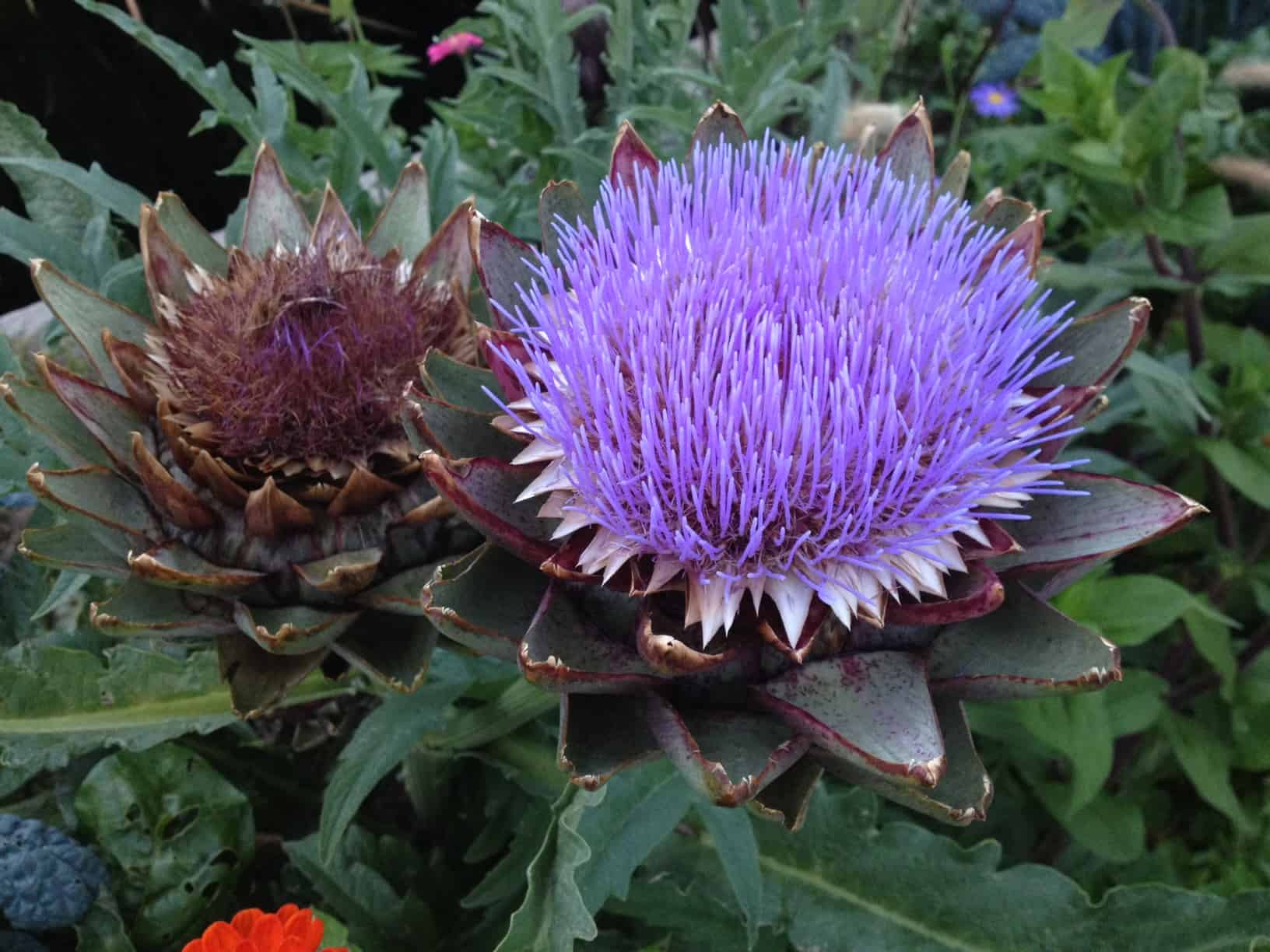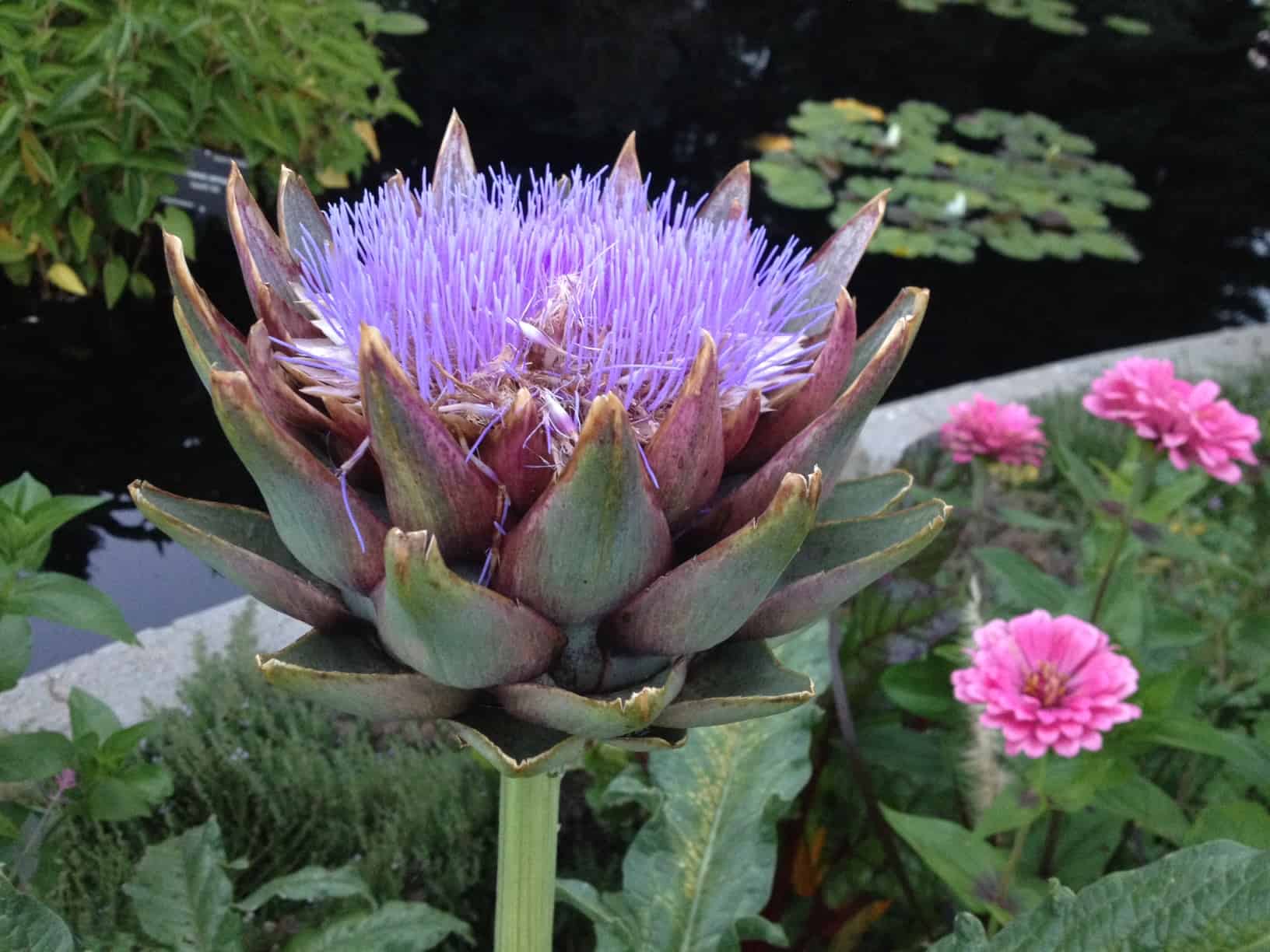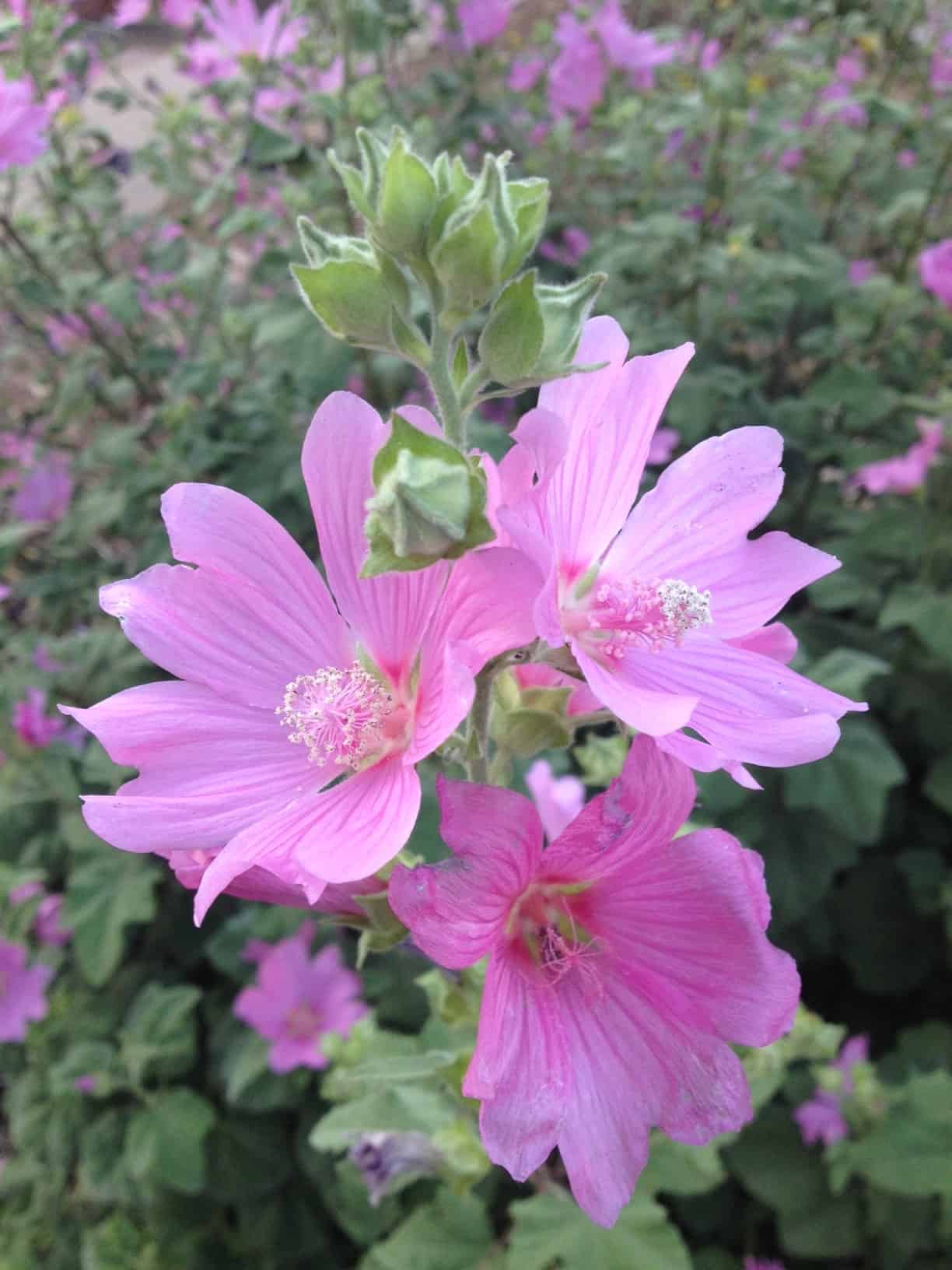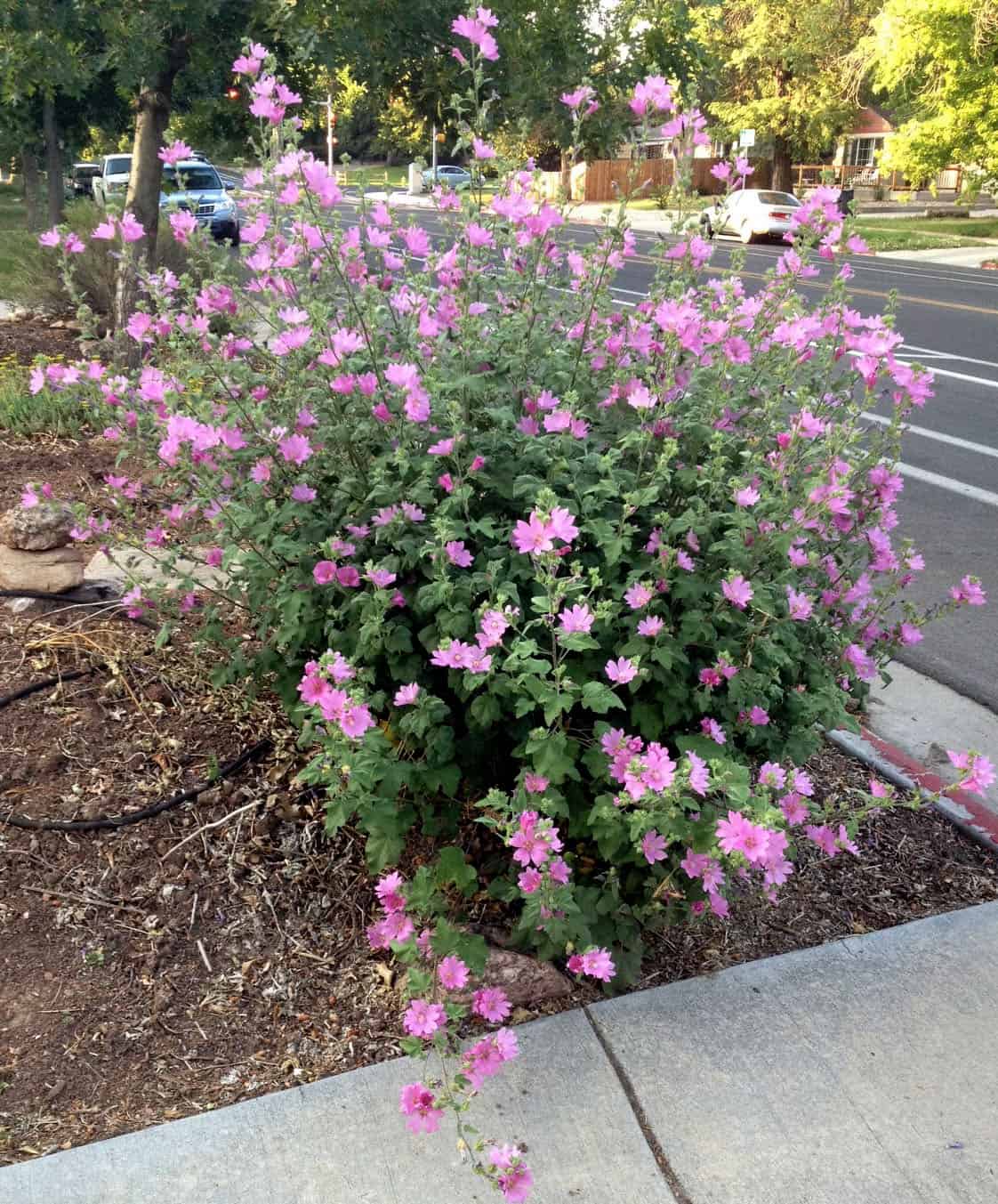by Todd Rutherford

Many of the annual and vegetable plants at the Denver Botanic Gardens are at their peak right now, and looking amazing. This photo of an artichoke plant in bloom was captured in the garden’s Potager Garden area. Artichokes are typically known as a food crop, with several cultivars grown worldwide, but many horticulturalists like to grow it as an interesting ornamental plant. Their large leaves and spiky flowers add a wonderful sculptural form to the garden. It is my understanding that on a typical artichoke farm, the flower buds are harvested and sent to market well before they open. In these photos we see that the flowers have been allowed to open, providing a stunning display for garden visitors.
Artichokes look a lot like thistles. And it turns out, artichokes are indeed related to thistles, with both plants being members of the very large family of plants that botanists call the Asteraceae.
The historical record holds that artichoke cultivation as a food goes back as far as ancient Greek and Roman times. It is likely that the Greeks brought artichoke cultivation to Italy. Some historians posit that cultivation of artichokes was further developed and improved upon in medieval Muslim Spain. The name artichoke can be traced to the medieval Arabic term “ardi shawki“.

This is the official blog of Outdoor Design Group, Colorado Landscape Architects. For more information about our business and our services, click here.
Related Posts:
by Todd Rutherford

I had never heard of a Hollyhock Mallow, but I came upon this delightful plant while visiting a friend last month. This interesting horticultural specimen was blooming in my friend’s neighbor’s yard. The profusion of pink blooms caught my attention from the corner of my eye, and I instantly raced over to get a closer look. Initially the flowers brought to mind common hollyhocks, but the form of this plant and the leaves were not quite the same as true hollyhocks. It took a little bit of internet sleuthing to arrive at the conclusion of what the plant was. I am still trying to learn more about this plant to determine if it is a good addition to the list of perennial plants for low water gardens.

Hollyhock Mallow, aka Malva alcea, is native to parts of Europe and Central Asia. As the common name implies, it is related to common hollyhocks (Alcea rosea) that many a grandmother has grown from seeds. Malva alcea is an herbaceous perennial that grows about 4′ in height, by 2-3′ wide. It has moderate water needs, but reportedly is drought tolerant. Unfortunately, it can fall prey to Japanese beetles, foliar nematodes, leafhoppers and spider mites. I wonder if it is plagued by the same leaf problems that make common hollyhocks look so beleaguered towards the end of the growing season. In some regions of the U.S. it has escaped cultivation and become naturalized. I do not know if it is invasive in Colorado. I look forward to learning more about this plant, and possibly testing it out in my own garden beds.
This is the official blog of Outdoor Design Group, Colorado Landscape Architects. For more information about our business and our services, click here.
Related Posts:




